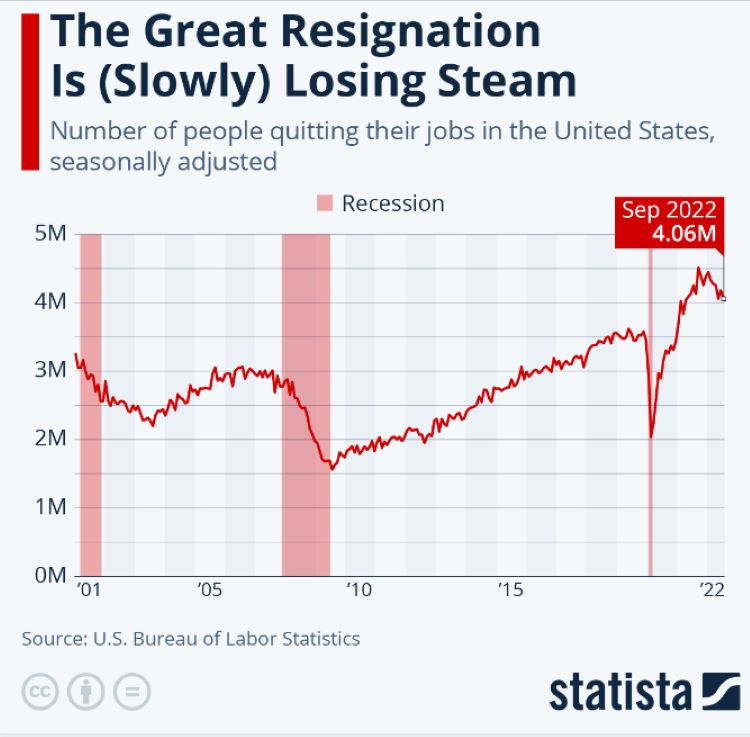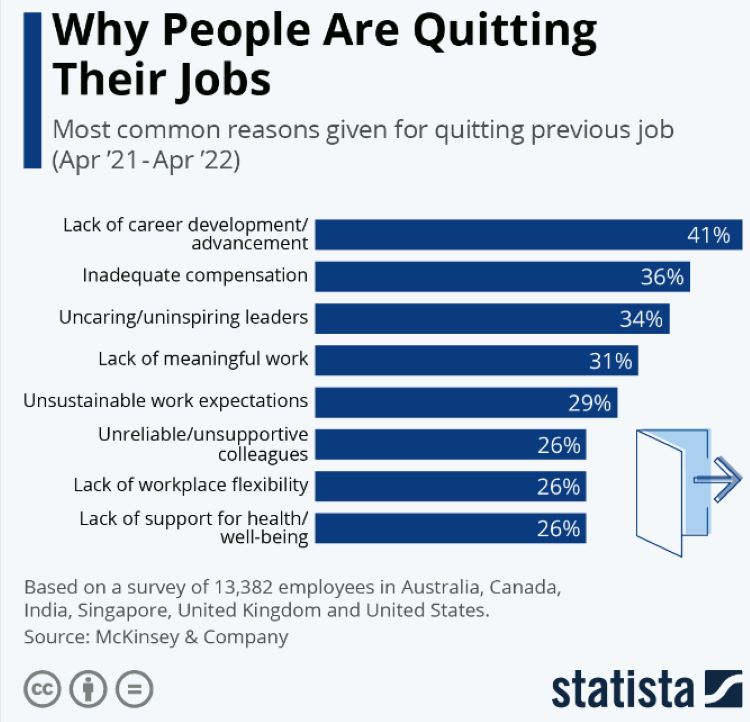It’s normal for employees to come and go throughout the years. Yet, with the Great Resignation and the economic downturn, retaining top talent within your organization may have been challenging lately.
According to SHRM, a total of 48 million people voluntarily left their jobs in 2021.
Additionally, it’s tough for organizations to keep up with the demands of enticing benefits due to rising inflation. Many companies have had to lay off employees, cut budgets and freeze hiring.
As a result, organizations are in an uncomfortable position to retain talent with the few resources they have left. With that in mind, you may be wondering what options you have when it comes to employee retention.
Use this guide to learn everything you need to know about retaining talent and implementing best practices.
The Importance of Employee Retention
The costs associated with losing top talent can be costly for businesses — from hiring and recruiting to training and losing productivity. According to Gallup, research estimates that replacing a worker can cost one-half to two times an employee’s salary.
This means if an employee’s annual salary is $50,000 — it could cost anywhere from $660,000 to $2.6 million to hire an individual.
Some good news is that the Great Resignation is starting to slow down, according to Statista’s chart below.

Source: www.statista.com
In September 2022, there was a slight decrease in the number of people quitting their jobs — from 4.5 million to 4.06 million within the year. Though the quit rate is starting to slow down, employers are still not out of the red yet.
Employee turnover also costs your company in less tangible ways. For instance, it can stall productivity and morale among current teams because you lose the collective knowledge and relationships a former employee developed over time.
The Top Reasons Employees Quit
Employees leave their jobs for various reasons, some of which can be out of the company’s control. For instance, they might go because they had a child, are making a career change or have decided to retire.
Yet, many workers leave because they are unsatisfied with their job. All of these elements are within your organization’s control, including:
- Lack of recognition
- Lack of career advancement opportunities
- Lack of job security
- Boredom
- Burnout
- Poor management
- Uncompetitive compensation
Lack of career development is the most common reason employees quit their jobs.

Source: www.statista.com
According to Statista, 41% of people look for opportunities elsewhere because their current employee doesn’t offer career advancement. While every company has unique areas for improvement, these are key areas to consider when improving employee retention.
Preventative Measures to Improve Employee Retention
1. Offer Competitive Benefits
Offering perks outside of compensation is a great way to retain employees. It shows you appreciate your teams and helps you stay ahead of the curve. Consider some of the perks that persuade people to switch their jobs below.

Source: www.statista.com
According to a survey, 61% of employees said they would change jobs to have better health insurance. If other employers offer great health insurance benefits — and this is why some of your employees are leaving — then it may be time to improve this area.
Yet, if offering better health benefits isn’t possible — you might consider switching to a self-funded health care plan. Many companies use this tactic because they save money by not having to pay monthly premiums. Plus, it offers more flexibility in the services you cover.
2. Provide Competitive Pay
Companies that don’t offer standard industry pay are at a serious disadvantage. It lowers their ability to attract and retain top talent.
Employees want to be sure their employer pays them for what they’re worth. For instance, if you have a graphic design team, are you paying them the industry standard of $50,710 annually?
A salary plays a large role in showing appreciation for their work and keeps their satisfaction high. In turn, employees are likely to put forth their best effort, improving the bottom line on your end.
In contrast, employees tend to experience burnout and look for other opportunities if they feel their wage is lacking.
3. Offer Flexible Schedules
Providing remote and hybrid work options in a modern workplace is becoming increasingly vital. However, more is needed to retain top talent. In today’s workforce, employees desire the ability to decide how and when they work.
Micromanaging is something that your company should avoid entirely. Employees can’t gain confidence if their managers aren’t trusting them. Unless they aren’t consistently performing well, they should have the freedom to decide how they get work done.
Additionally, offering times that allow employees to work when they want would be beneficial. This caters to their productivity as some employees feel most energized working in the mornings while others feel better working in the afternoon.
4. Make Learning and Development Accessible and Visible
Employees with career advancement opportunities are more likely to stay at their company. That’s because they feel their organization is invested in their career path and are less likely to take their talents elsewhere.
Consider offering learning and development opportunities for your teams. These could be through a professional learning stipend or a reimbursement program that enables employees to purchase online courses, attend conferences and buy books.
It could also be an internal growth opportunity, such as a mentoring program, cross-functional assignments and high-visibility projects. These allow employees to learn new parts of the business and hone their skills.
5. Prioritize Diversity and Inclusion
Building a diverse and inclusive workforce takes much effort and time. However, it’s become an expectation in the workplace. Company leaders should think of ways to make their workplace more inclusive. These could include:
- Launching inclusive policies.
- Raising awareness.
- Offering inclusive company holidays.
- Modeling inclusive language.
- Being mindful of personal lives.
- Respecting religious and cultural backgrounds.
Even the workplace’s design can foster D&I, including accessible workstations, private spaces for nursing mothers and gender-neutral bathrooms.
6. Build a Culture of Recognition
Many employees leave their jobs because they feel unappreciated and undervalued. Ensuring every employee feels like you notice them for their hard work can improve engagement and retention.
And they can often be in small gestures, such as handwritten notes and shout-outs during meetings.
Maintaining this on a regular basis is crucial in helping your team feel appreciated. Many companies have invested in peer recognition software — allowing individuals to celebrate their coworkers’ achievements.
7. Gain Employee Feedback
Conducting surveys for employees allows you to understand the underlying issues of your organization. You can gain valuable insight into why your top talented employees are leaving.
Surveys can be anonymous, making it more likely that you’ll receive employee feedback and identify which areas of the organization you must improve.
Navigating Employee Retention
Employee loyalty isn’t given — employers must earn it.
Many company leaders think replacing their employees and finding top talent is easy. However, those willing to put effort into driving employee retention will save significant time and money. In addition, it brings momentum, growth, productivity and stability to an organization.
Start by creating an employee retention plan and ensure you implement these tactics to achieve overall employment success.
About the Author: Eleanor Hecks is editor-in-chief at Designerly Magazine. She was the creative director at a digital marketing agency before becoming a full-time freelance designer. Eleanor lives in Philadelphia with her husband and pup, Bear.
